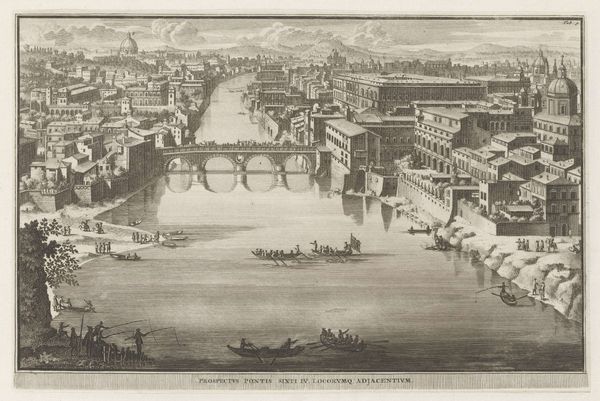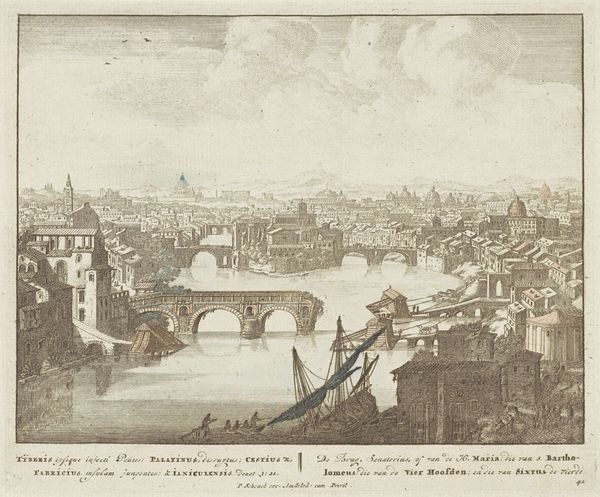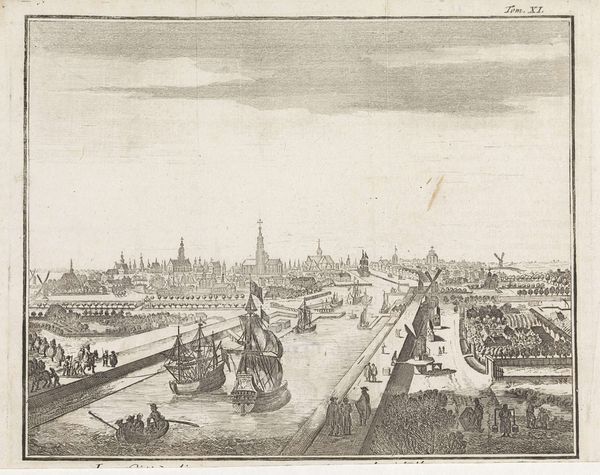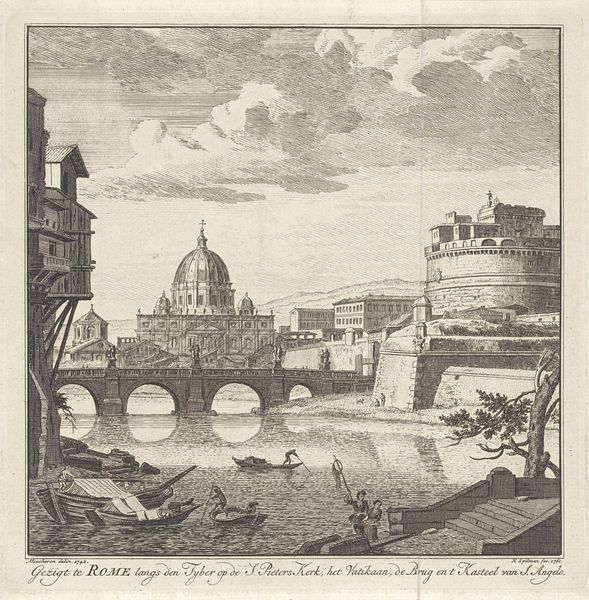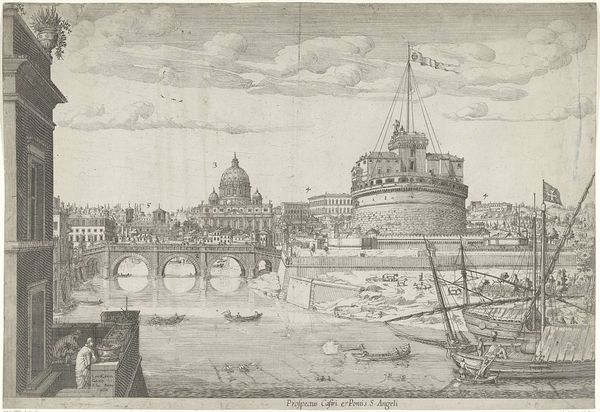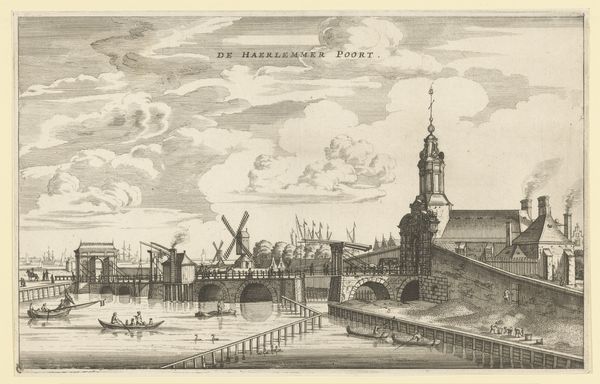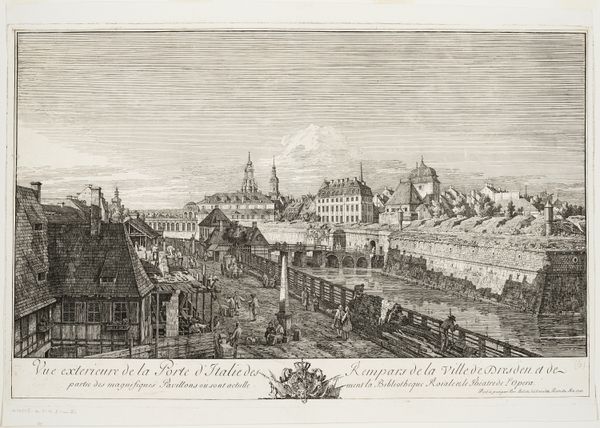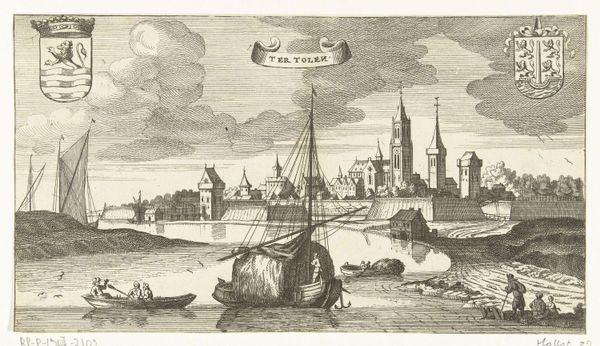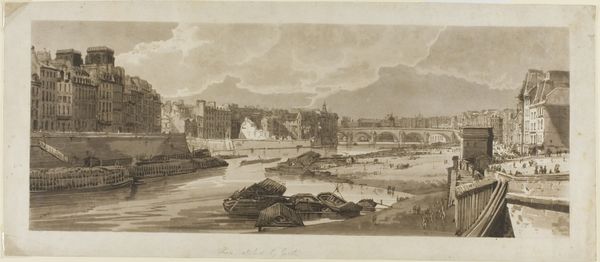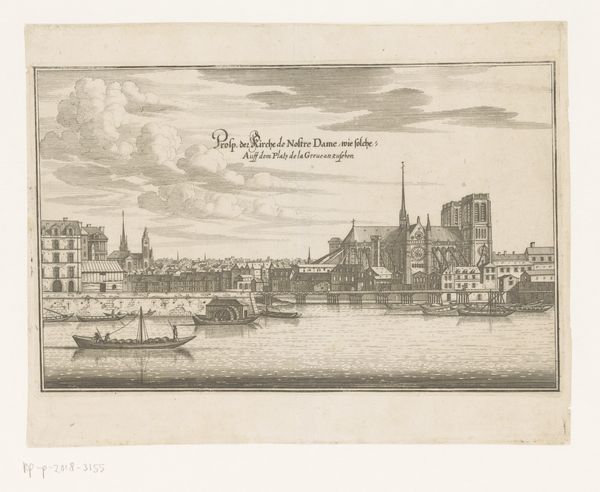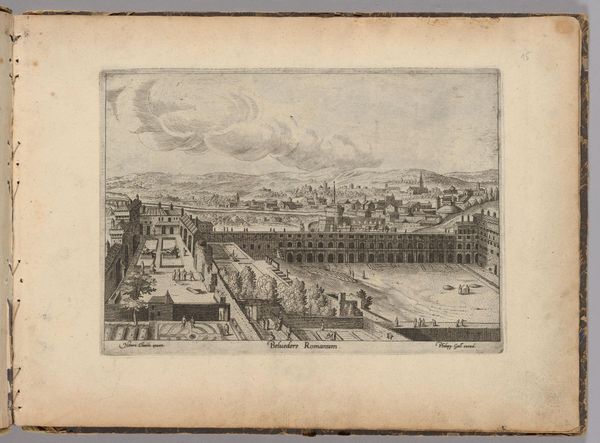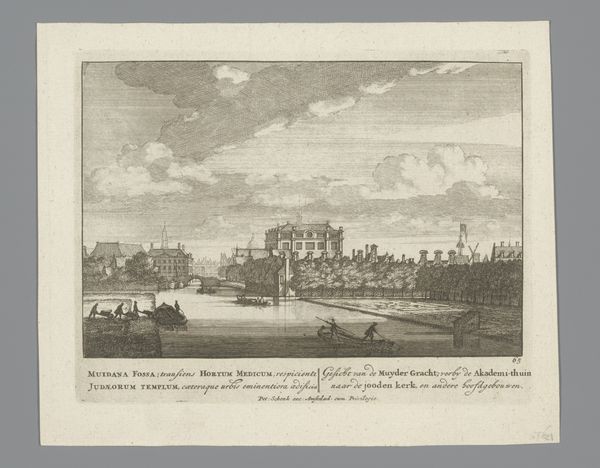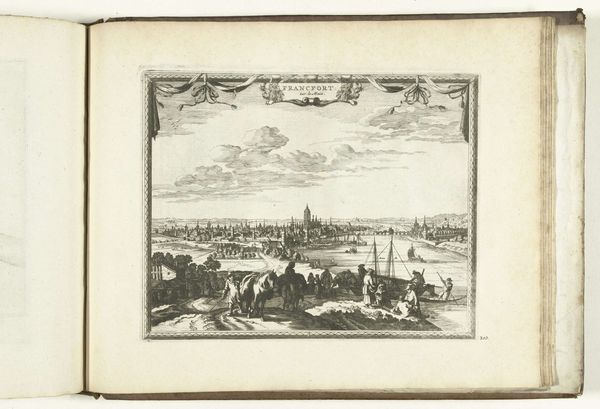
Gezicht op Rome met de Engelenburcht, de Engelenbrug en de Sint-Pietersbasiliek 1729
0:00
0:00
print, engraving
#
baroque
# print
#
landscape
#
cityscape
#
engraving
Dimensions: height 222 mm, width 328 mm
Copyright: Rijks Museum: Open Domain
Curator: Here we have Jacobus Baptist's "View of Rome with the Castel Sant'Angelo, the Ponte Sant'Angelo, and St. Peter's Basilica," an engraving from 1729. Editor: My first impression is one of meticulous order. The sharp lines of the architecture against the softness of the clouds create a striking contrast. Curator: Indeed. Baptist’s strength lies in capturing the architectural and urban planning of the period. You can clearly see the significance of St. Peter’s within the Roman skyline; it’s the focal point, commanding attention even at a distance. Editor: The choice of black and white really highlights the geometric forms of the Castel Sant'Angelo, the bridge, and St. Peter's. It allows us to see the interplay of light and shadow, giving weight and structure to what might otherwise seem flat. How would you characterize the role this print played historically? Curator: Prints like this circulated widely, democratizing access to grand views for those who couldn’t afford travel or lavish paintings. It visually codified Rome's importance as both a religious and historical center for a burgeoning European public. Think of it as a pre-photographic postcard—a souvenir but also a document reinforcing the power and prestige of the Church. Editor: The perspective draws the eye from the Castel Sant'Angelo to St. Peter's, emphasizing a visual connection, almost as if the fortress protects the Church. Does this reinforce or challenge papal authority at the time, given its complex relationship with temporal power? Curator: That's a sharp question! The dual presence of the Castel Sant'Angelo—originally Hadrian's mausoleum transformed into a papal fortress—and St. Peter’s is deliberate. It speaks to the intertwined nature of spiritual and secular power. It suggests a protective role, yes, but also hints at the papacy's need for military and political defenses in an era of frequent conflict. Editor: The details invite us to examine more closely the nature of lines, angles, forms... The medium emphasizes precision, detail, but also, maybe a distance or formality. What do you take away from the image, now that we’ve had this dialogue? Curator: For me, the image serves as an assertion of Baroque power. In this composed image, we glimpse Rome through the lens of architectural control and the grand visions of both church and empire. It’s more than just a pretty view. Editor: Yes, while aesthetically ordered and balanced, this image provides a visual reminder of complex histories and political relationships that linger beneath the city’s skyline.
Comments
No comments
Be the first to comment and join the conversation on the ultimate creative platform.
